Vessel Hit by Missiles off Yemen's Coast - Shipping Sources
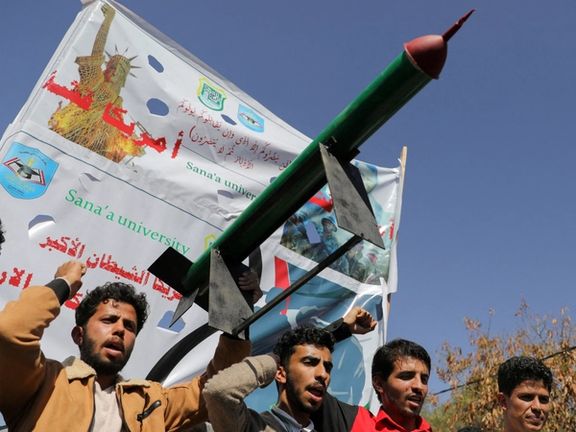
A Marshall Islands-flagged bulk carrier off the Yemeni coast took on water after being targeted with three missiles, maritime security and shipping sources said on Tuesday.

A Marshall Islands-flagged bulk carrier off the Yemeni coast took on water after being targeted with three missiles, maritime security and shipping sources said on Tuesday.
The ship issued a distress call, saying it had sustained damage to the cargo hold and was taking on water about 54 nautical miles southwest of Yemen's port city of Hodeidah, British security firm Ambrey said.
Greek shipping sources said the vessel, which bears the name Laax, was sailing to a port nearby to assess the extent of the damage. It was headed to the United Arab Emirates.
Its Greece-based operator Grehel Ship management did not immediately reply to a request for comment.
The United Kingdom Maritime Trade Operations (UKMTO) said separately on Tuesday that it had received a report of an incident 31 nautical miles southwest of Hodeidah.
The ship was hit by missiles and sustained damage, reporting an impact in the water in close proximity to the vessel, UKMTO said, adding that the crew were reported safe and the vessel was proceeding to its next port of call.
As an Iranian proxy group, the Houthis began attacking maritime commercial traffic in mid-November after Iran’s Supreme Leader Ali Khamenei called on Muslim countries to blockade Israel. The attacks were first limited to the Red Sea but later expanded to the Indian Ocean.

Iran's acting president Mohammad Mokhber claimed on Monday that Iran is now much stronger than a few years ago, asserting it could 'hit' neighboring countries and Israel with little to no repercussions.
Mokhber was referring to missile attacks by Revolutionary Guards (IRGC) against targets in Pakistan, Iraqi Kurdistan, and Israel, all of which have taken place in the context of an ongoing conflict after 7 October.
"There was a time when [the IRGC] would test a missile, and all [Iran’s] markets would be unsettled. Government officials would scream, saying, ‘what will happen to our country after what you did’. [But] today, three countries have been hit. We hit Israel. [Yet] people wake up in the morning… and the currency rate is the same. Inflation is the same," Mokhber said.
The interim president was speaking at the opening ceremony of Iran’s new parliament, defending the government of former president Ebrahim Raisi, who died in a helicopter crash in northwestern Iran last week. Mokhber seemed to be undisturbed by the presence of foreign dignitaries, including those whose countries were targeted by the IRGC missiles.
His remarks raised a few eyebrows, not least because Pakistan and Iraq whose targeting Mokhber seemed to be celebrating, declared national mourning following the death of Ebrahim Raisi and sent high-ranking delegations to his funeral.
As undiplomatic as Mokhber’s words may be, it betrays an element of truth that has been brought up by many politicians in the US and elsewhere: that the Islamic Republic of Iran has gained in confidence and aggression in the past few years, especially since Joe Biden entered the White House.
Biden critics say his ‘leniency’ has emboldened Iran and the IRGC. On Monday, Wall Street Journal reported that the Biden administration is advising European countries to "back off plans to rebuke Iran" for advances in its nuclear program, hoping to prevent escalation ahead of the 2024 US elections in November.
Even more controversial than his assertion about Iran becoming immune to repercussions, was Mokhlber’s claim that economy had come out unscathed from Tehran’s aggressive actions –on the day that brokers in two major stock exchanges in Iran halted trading to protest the downturn in Iran’s stock market.
Many users on social media were quick to point out that Iran’s currency hit an all-time low against the US dollar following the IRGC’s drone and missile attack on Israel on April 13. Others mocked Mokhber's words, stating that Iran’s economy was in ruins, and that millions of Iranians were struggling to make ends meet while the nation’s wealth was being spent on the regime’s costly adventures in the region and beyond.
It’s unclear if Mokhber will stand in the upcoming elections to replace Raisi. He is well positioned as vice-president and enjoys the trust of Supreme Leader Ali Khamenei. However, other hardline figures are also contenders, such as Saeed Jalili, a former nuclear negotiator known for his tough stance, and Parviz Fattah, a former IRGC member currently heading the influential parastatal foundation for the Execution of Imam Khomeini’s Orders, a key player in Iran’s economy.

Iran-backed Houthis on Monday claimed to have targeted three commercial vessels in the Indian Ocean and the Red Sea, and two US destroyers in the Red Sea.
The Houthi military spokesman, Yahya Saree, said the ships were the Larego Desert and the MSC Mechela in the Indian Ocean, and the Minerva Lisa in the Red Sea. He did not name the destroyers or specify when the alleged attacks took place.
US Central Command (CENTCOM) issued a statement on Monday only referring to one “uncrewed aerial system (UAS) stating that warships had destroyed it.
“At approximately 4 a.m. (Sanaa time) on May 27, U.S. Central Command (USCENTCOM) forces successfully destroyed one uncrewed aerial system (UAS) over the Red Sea, launched from an Iranian-backed Houthi controlled area of Yemen. It was determined the UAS presented an imminent threat to merchant vessels in the region,” the US statement said.
The Houthi’s claim of a much larger attack could not be independently confirmed.
As an Iranian proxy group, the Houthis began attacking maritime commercial traffic in mid-November after Iran’s Supreme Leader Ali Khamenei called on Muslim countries to blockade Israel. The attacks were first limited to the Red Sea but later expanded to the Indian Ocean. Dozens of attacks have reduced international shipping through the Red Sea, the shortest route between Aisa and Europe.
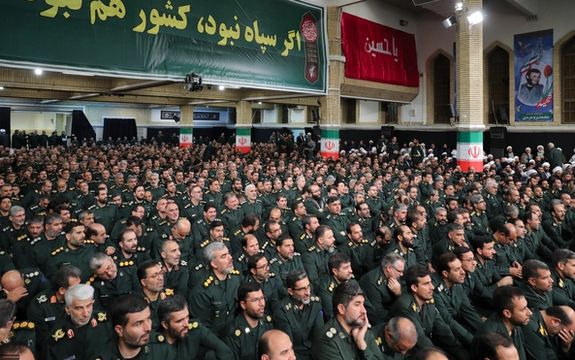
The economic powerhouse of Europe, Germany, along with a number of other European countries are pushing the EU to classify the Iranian regime’s Islamic Revolutionary Guard Corps as a terrorist organization.
The German Press Agency (DPA) reported on Monday that diplomats told the wire service that “Multiple EU countries including Germany are pushing to classify the Islamic Revolutionary Guard Corps (IRGC) as a terrorist organization on the basis of a German court ruling.”
According to the DPA, diplomats emphasized on Monday that the Guard's terror listing would be primarily a symbolic step because there are already EU sanctions against them.
However, a blanket sanction on the IRGC—similar to the EU terror designation of Hamas—would be a powerful move that would adversely affect IRGC-linked structures in the EU, involved in activities such as spying on Iranian dissidents and carrying out terror plots.
The German legal ruling earlier this year is from the High Court in the city of Düsseldorf, stating that a 2022 attack on a synagogue in the city of Bochum was traced to the “Iranian state authorities.”
In March, Iran International reported that after the court ruling, the German Christian Democratic Union MP, Norbert Röttgen, had said, “The IRGC's terror listing must come now. There are enough starting points.”
Since December, the EU’s foreign policy head, Josep Borrell, and German foreign minister , Annalena Baerbock, have claimed there are no legal rulings within the EU that show the IRGC has carried out terrorist attacks within Europe.
A German paper, in December, wrote that a classified EU document states that IRGC can be sanctioned as a terrorist entity in Europe, despite assertions to the contrary by Borrell and Baerbock. Iran International has reported on a 2017 legal case that revealed that the IRGC hired a Pakistani contract killer to assassinate pro-Israel advocates in Europe.
The Trump administration sanctioned the IRGC as a foreign terrorist organization in 2019. When asked what President Biden can do to convince the EU to sanction the IRGC, Jason Brodsky, the policy director for the US-based United Against Nuclear Iran, told Iran International “I think the Biden administration should be making this issue a priority and pushing very hard for the EU and the UK to designate the IRGC as a terrorist organization. This would be a force multiplier in the transatlantic sanctions architecture against Tehran.”
He added “There is strong bipartisan support for the EU and UK to take this step. The US should be making it clear to its allies that not sanctioning the IRGC as a terrorist organization will have ramifications in their relations with the United States.”
Lawmakers from Germany and Austria welcomed the movement in Brussels toward a terror proscription for the IRGC.
Hannah Neumann, a German Green party member of the European parliament, wrote on X: “German court verdict suffices as basis for terror listing of #IRGC, says EU legal service. So, no more excuses @JosepBorrellF And thank you @ABaerbock for continuously pushing this file forward. IRGCterrorists.”
Baerbock is also a member of the Green party.
Ewa Ernst-Dziedzic, a Green party MP in the Austrian parliament in Vienna, wrote on X “No more excuses or after years of standstill, things are finally moving: German court ruling is sufficient as a basis for classifying IRGC as a terrorist organization, says the EU Legal Service. I have visited several times @OeParl in favor of this and would find this step more important than ever in view of current developments. Austria must take a clear stand!”
Rabbi Abraham Cooper, the associate dean of the LA-based human rights organization, Simon Wiesenthal Center, told Iran International that he commends Germany for “taking the lead in a long overdue push to classify Iran’s Islamic Revolutionary Guard for what it is-- a terrorist entity.”
The German media report did not name the other countries supportive of a ban on the IRGC. Borrell, who is widely viewed as sympathetic to the Islamic Republic, has been recalcitrant toward punitive measures targeting the IRGC.
A full terrorism designation imposed on the IRGC would enable European law enforcement personnel greater police and investigatory powers to prosecute Iranian regime officials and organizations.
The classification of the IRGC as a terrorist organization could also have profound effects on European-Iran trade relations. The IRGC is estimated to control over 50% of the economy in the Islamic Republic.
The state of Israel has been advocating for years that the EU outlaw the IRGC. In November, when asked if the EU and Germany should outlaw the IRGC, Lior Haiat, a spokesman for Israel’s foreign ministry, told Iran International “We do. Because it is a terror organization.”
Israel’s special envoy for combating antisemitism, Michal Cotler-Wunsh, also told Iran International in November, that the “IRGC and Hezbollah are terror groups and must be designated as such.”
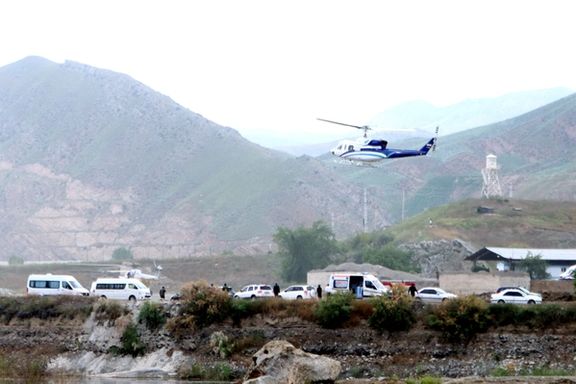
More than a week after the death of Iran's President Ebrahim Raisi, new and conflicting details about the incident continue to surface, leaving the circumstances of the helicopter crash shrouded in uncertainty.
On Friday, the first formal report by the General Staff of the Armed Forces on the helicopter incident was published. Although this report ruled out the possibility of the chopper being shot down, it did not state the main reason for the crash and mentioned that “more time is needed for a definitive conclusion”.
Adding to the perplexity, it has come to light that the President's bodyguard was notably absent from the ill-fated helicopter.
Raisi’s chief of staff’s account vs preliminary official report
An interview with Gholamhossein Esmaeili, Raisi's chief of staff and a member of the president's entourage, has further contributed to the confusion.
In the early hours of May 19th, Iran's President Ebrahim Raisi embarked on a journey, accompanied by his entourage, from Tehran to Tabriz.

Timeline of events on May 19th according to Iran President chief of staff:
6:00 AM (Tehran Time): Iran's president and his entourage flew from Tehran to Tabriz, located in the East Azerbaijan province of northwestern Iran, by plane.
7:15/30 AM: From Tabriz, three helicopters were utilized for a project visit in Agh Band.
9:00 AM: The second leg of the journey proceeded from Agh Band to Khoda Afarin, near the Giz Galasi Dam, with further plans for travel.
1:00 PM: The final leg was supposed to be from Khoda Afarin towards Tabriz, but the helicopter crash prevented the completion of the journey.
1:35 PM: En route to Tabriz, the helicopters attempted to avoid a “cloud Layer” by increasing their altitude. While the first and third helicopters successfully navigated the clouds, the president’s helicopter, flying in the middle, disappeared. It was later discovered to have crashed, resulting in the deaths of all its passengers. Iran President chief of staff stated: "We emerged from the cloud layer very normally, even without any turbulence."

Esmaeili's account highlights two crucial points. The first point is his statement that the "weather was favorable, with no issues”.
Noor News, an agency close to the Supreme National Security Council, also reported that all necessary safety measures had been implemented to ensure the president's helicopter flight was secure.
The short six-item report by the General Staff of the Armed Forces also did not mention weather conditions at the time of the incident and stated on item six of the report that "no suspicious issues were observed in the communications between the control tower and the flight crew." This raises questions about the suddenness of the incident.

Signals from the chopper post-crash
Esmaeili's account also sheds light on his communication with cleric Mohammad Ali Al-Hashem, a passenger aboard the helicopter, post-crash.
Esmaeili explains that he attempted to contact the pilot, but Al-Hashem answered the phone instead. He reveals that he queried Al-Hashem about the incident, to which he responded that “he did not understand what has happened”.
In the interview, he stated that he was in contact with Al-Hashem for three to four hours after the incident. However, the alleged surviving passenger was found dead when rescue teams arrived, although his body was not burned like that of Raisi and others.
While “most likely the transponder system was turned off or that the helicopter did not have one,” as stated by the Turkish transport minister, the questions is if there was a mobile signal for up to three hours after the crash. In that case, why pinpointing the coordinates of the helicopter wreckage took 15 hours?
The mystery of the absent bodyguard
The latest images of Ebrahim Raisi show his bodyguard was almost always at his side. However, the released list of casualties revealed that he was not onboard.
Given that the Bell 212 helicopter can accommodate 15 passengers but only had 8 on board, the question arises: why did Ebrahim Raisi’s personal bodyguard continue the journey in a different helicopter?
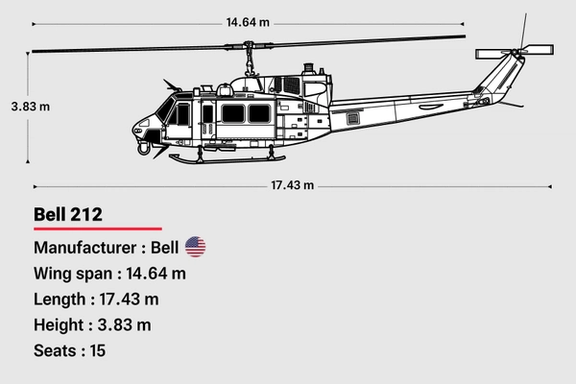
Javad Mehrabi, the bodyguard of Iran's President, continued the journey in one of the other two helicopters accompanying the president.
General Esmaeil Kosari, a former IRGC commander and current member of parliament, dismissed claims about the status of the president's guards, stating, "Some media outlets are fabricating irrelevant statements.
The second guard was in a separate helicopter as there was no necessity for multiple guards in one aircraft."
However, HamMihan Newspaper in Iran reported suggestions that some passengers may have been reassigned to another helicopter at the last minute before the flight. A video report published May 26 by state broadcaster IRIB shows him getting off the President’s chopper during a landing.
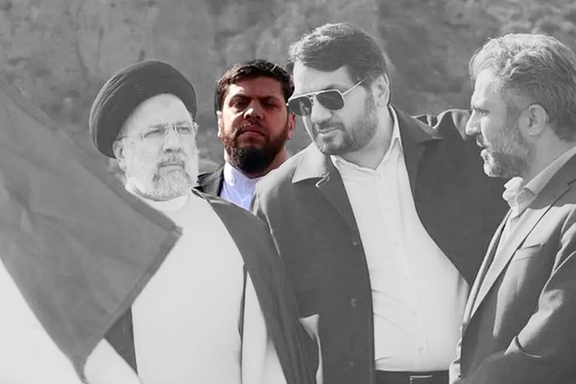
What might have caused the helicopter crash?
Pinpointing the exact cause of the May 19 fatal crash is challenging. Such investigations are long and complex processes. But when it comes to the Iranian government, any such report should be taken with a pinch of salt.
The Armed Forces Staff is the same organization that, after 73 hours of denials, finally admitted that "Ukrainian Airlines flight PS752... was hit [with missiles] due to human error and unintentionally..."
The flight was struck by two missiles from the Revolutionary Guards killing all 176 people on board. Iranian officials attributed the plane crash to technical failure for 73 hours. Canada, Ukraine, Sweden, and Britain are seeking damages for the families of the people on board who were killed and believe that Iran did not conduct a fair, transparent, and impartial investigation and prosecution.
Also, the Ontario Court of Justice ruled in 2023 that the shooting down of Flight PS752 by the Iranian military constitutes "terrorist activity".
Potential causes might include:
1- Weather condition: Some in Iran attribute the crash to adverse weather conditions. A member of the helicopter search and rescue team stated in an exclusive interview with Tasnim News Agency, affiliated with the IRGC, that the "weather factor" can be considered the cause of the crash. However, this contrasts sharply with the account given by the President's chief of staff, who was part of the president's entourage and reported that the "weather was favorable, with no issues."
2- Technical Failure: Catastrophic mechanical failures, like the rear rotor mechanism malfunction that occurred in the King Power Stadium crash, are not unprecedented and could have contributed to the Iran helicopter crash.
3- Human error: Human error remains a constant specter in aviation mishaps. Errors in altitude reading, for example, could have played a role in this incident.
4- Explosive Sabotage: In the General Staff of the Armed Forces of the Islamic Republic of Iran, it is stated that “the pilot established contact with the pilot of another helicopter approximately one and a half minutes before the helicopter crash”. This again reinforces the hypothesis of a sudden and unprecedented incident.
Farzin Nadimi, a Senior Fellow at The Washington Institute, did not rule out the possibility of sabotage in the helicopter crash. He stressed the importance of conducting a thorough investigation and suggested that various types of "small bombs" could have been employed, including remote-controlled or altitude-triggered explosives. Examining the wreckage could yield crucial evidence.
The mysterious death of Yevgeny Prigozhin, who attempted an unsuccessful coup against Russia’s Vladimir Putin and perished in a crash involving his private jet, underscores the impact of such incidents on both leaders and adversaries.
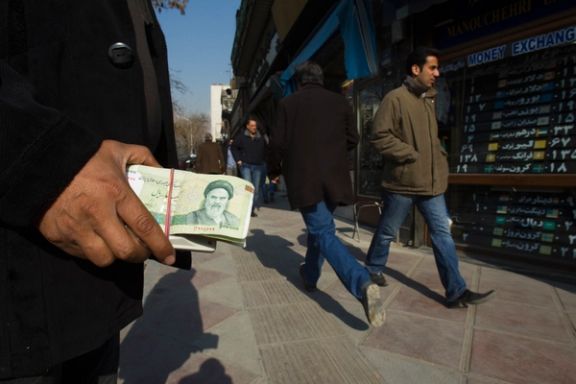
Iran’s battered currency, the rial, has recovered more than half of its losses during May as the likelihood of war with Israel decreased and the US continued negotiations with Tehran.
The sudden death of President Ebrahim Raisi last week in a helicopter crash briefly weakened the national currency, but it recovered surprisingly fast, although it is far from pre-January levels.
The rial, which was trading at around 510,000 per dollar in December 2023, began to fall steadily from early January as tensions rose in the Middle East and Tehran continued to threaten Israel. By mid-March it was trading at around 600,000 to the dollar but fell to 670,000 as Israel attacked Iran’s diplomatic compound in Damascus on April 1.
Two top Revolutionary Guard generals and five other key officers were killed when Israeli missiles flattened a building near the embassy, prompting Iran to vow revenge, and Israel threatening to retaliate.
This raised the likelihood of both an economic and a political crisis for Tehran’s rulers, as the specter of more inflation on top of the current 50-percent annual rate sparked a sense of panic.
Tehran finally delivered on its promise by launching more than 300 drones and missiles against Israel on April 13-14, 99% of which were shot down by Israeli air defenses and allied warplanes.
However, the Israeli response a few days later was very limited and measured, gradually dissipating the fears of a major confrontation.
By late April, the rial began to rise and by mid-May the dollar fell to around 580,000 rials in Tehran’s black market, meaning a strong come back for the rial from the April lows. It has stayed at that level for almost two weeks.
Although the reduction of tensions with Israel is seen by analysts as the main reason for rial’s rebound, government intervention in the markets is always a factor in Tehran.
There are limited sources for the black market to obtain hard currencies, such as US dollars, euros, British pounds or Canadian dollars. The black market’s cash currency flows are mostly from small or individual sources. As a result, when the rial falls sharply and the government decides to intervene, it injects a few tens of millions of US dollars’ worth of hard currencies into the market.
The amount and frequency of these interventions are usually treated as state secrets, but occasionally hints appear in the media.
However, bad news about higher prices for consumers continue to be sporadically reported in Tehran media and on social media. Usually, it takes a few weeks for rial’s fall to impact prices and the annual inflation rate. Local media have reported in the past two weeks have that housing costs and food prices have been rising, with a middle-class family now forced to pay at least $250 a month for rent, which is more than ordinary salaries. Consumption of meat also continues to decline, as one kilogram of meat could cost 5% or more of monthly wages.
The new president, to be elected at the end of June, will face the monumental task of addressing economic challenges that have become increasingly difficult due to ongoing oil-export and banking restrictions. Without exceeding roughly $70 billion in oil exports, the government continually faces significant budget deficits and is forced to print money.